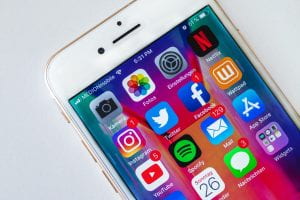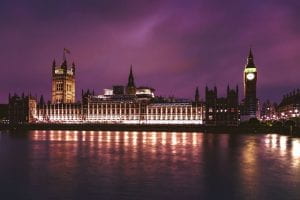The spiral of silence theorises that an individual will not discuss their opinion on a policy issue among friends and family, when they believe that this belief may leave them socially isolated. If their opinion is in line with the majority of the public sphere, a person is likely to speak out, however if they believe they are in the minority, they will stay silent.
The idea of social media is that anybody, anywhere, regardless of their colour, status and creed, can publish their opinions on an equal footing to everybody else. Social media creators had hoped that their platforms would allow free discussions to take place, and those with minority views might feel free to discuss and debate their opinions.
However, multiple studies have found that quite the opposite has happened, and people are less likely to share their opinions online than they are in real life.
In 2014, the Pew Research Center in the USA found undertook a survey on the spiral of silence and social media, purposely focusing on the divisive issue of Edward Snowden’s 2013 surveillance leaks.
The survey found several key findings:
- People are less willing to discuss controversial topics on social media than in person. The study found that 86 per cent pf people were happy to have a discussion in person about Edward Snowden, but only 42 per cent of them would post about it on Twitter or Facebook.
- Less than 0.5 per cent of those asked who would not discuss the story in person, would be comfortable posting about it on a social media platform.
- Facebook users were more willing to post about Edward Snowden if they had a belief that their ‘friends’ would agree with them.
Chen (2018) found that not posting because of the fear of being hounded by friends and family was not the only way to refrain from expressing opinion on social media. The study suggests that if the public are afraid of being isolated, they are more likely to self-censor their views by removing posts once they realise the difference in opinion with friends. However, it also found that the amount of anonymity offered by a social network also had an impact on someone’s willingness to post about a controversial subject.
Chen discovered that “The stronger the political disagreement and publicness are, the greater the indirect effect on inhibiting disagreeing opinion expression and enhancing withdrawal behaviours becomes.”
In terms of public relations, this spiral of silence means it can become difficult to gage the true opinion of the public sphere.
We only need to look at the election of Donald Trump and the vote to leave the European Union to find examples of opinions which were presented as being the minority, but instead were revealed to be popular to find examples of this in modern times.
In order to live in a free and democratic society, it is important that the public feels free to discuss their opinions, as long as they are not offensive or violent towards another person. While the spiral of silence exists, public relations practitioners will find it difficult to gauge the true opinion of the public, particularly when it comes to issues of a controversial nature, and their job of maintaining a relationship between an organisation and the public becomes all that little bit harder.
References
Chen, H (2018). Spiral of silence on social media and the moderating role of disagreement and publicness in the network: Analyzing expressive and withdrawal behaviors. New media in society, 1:20.

